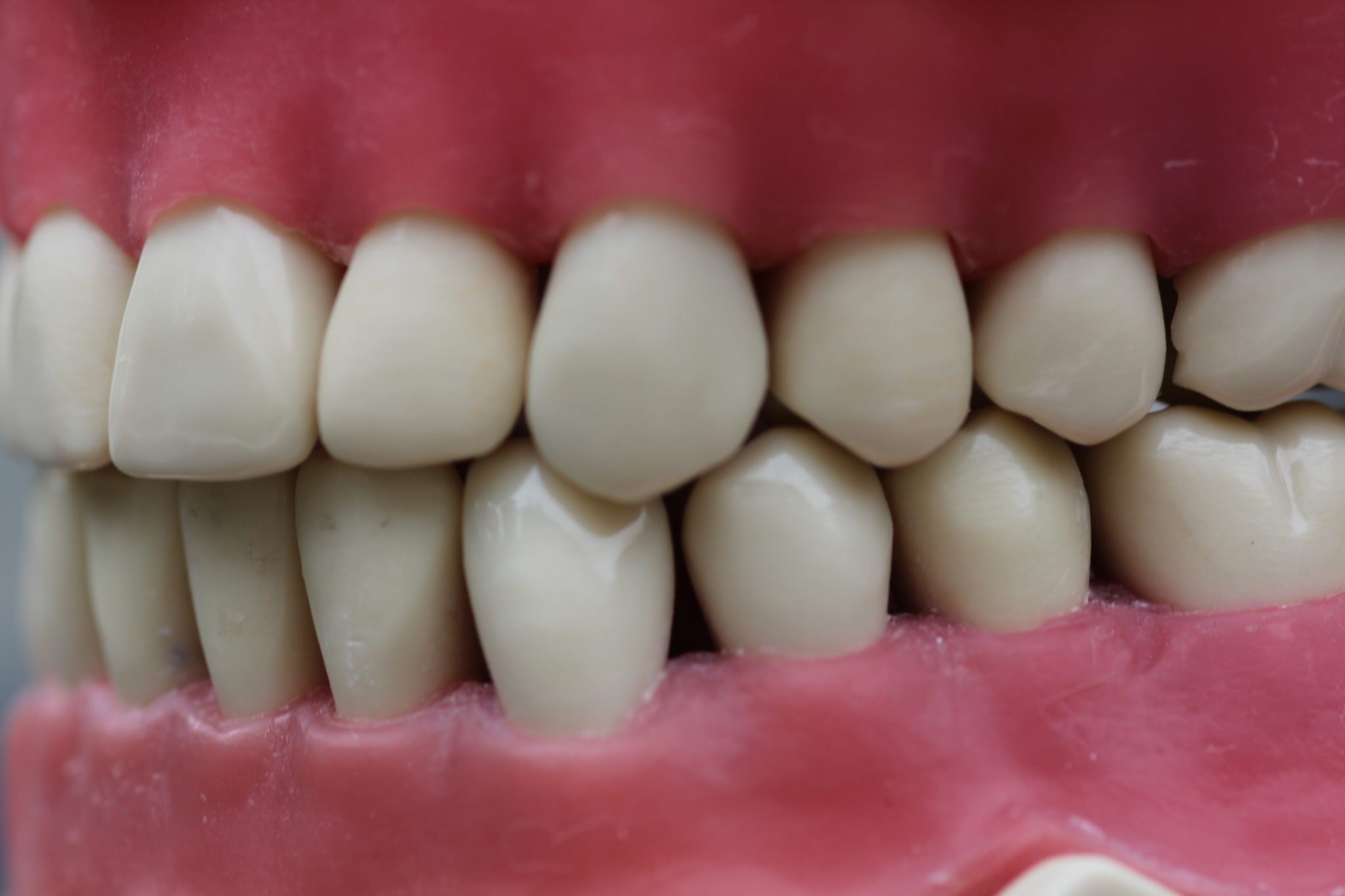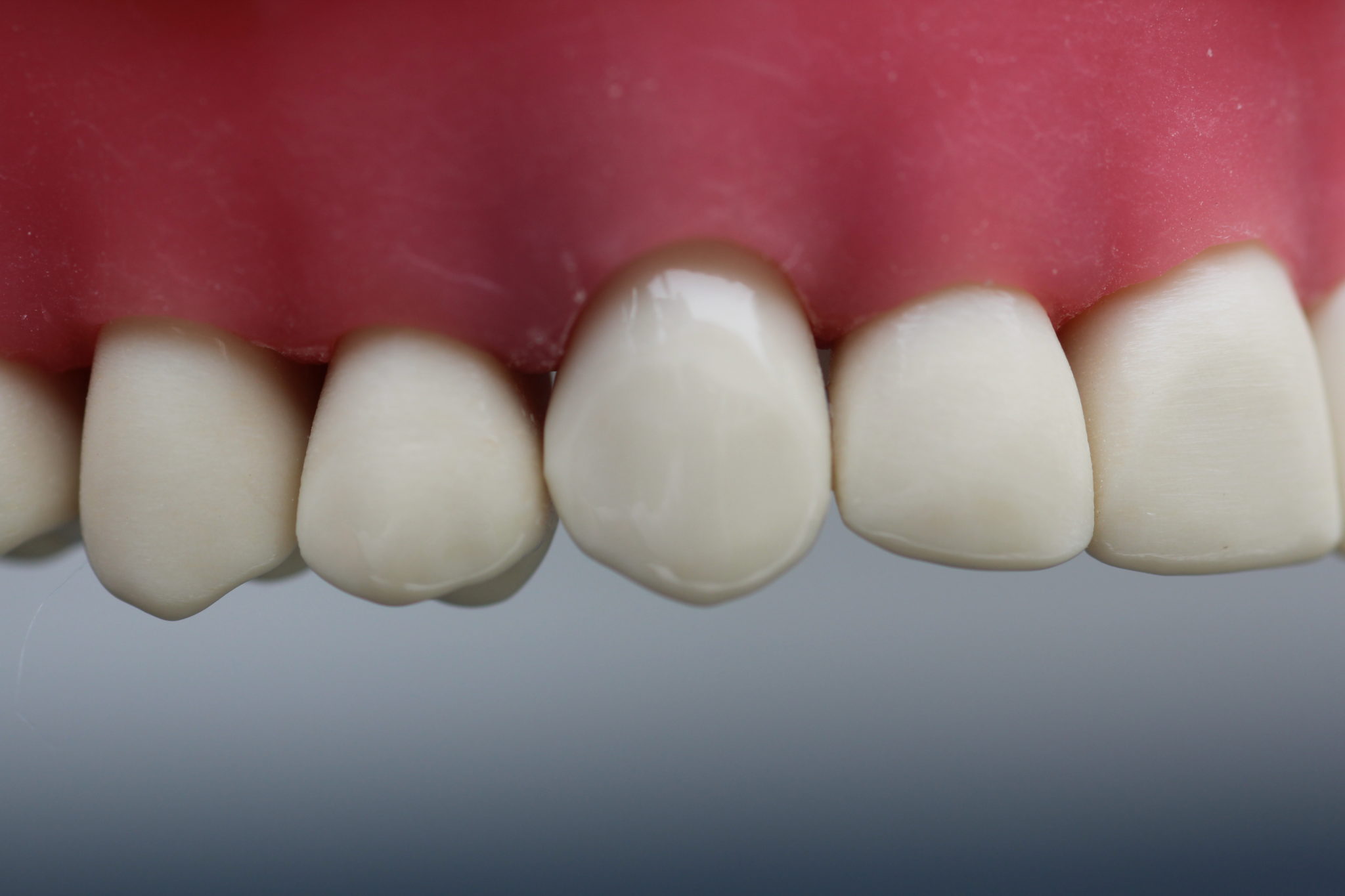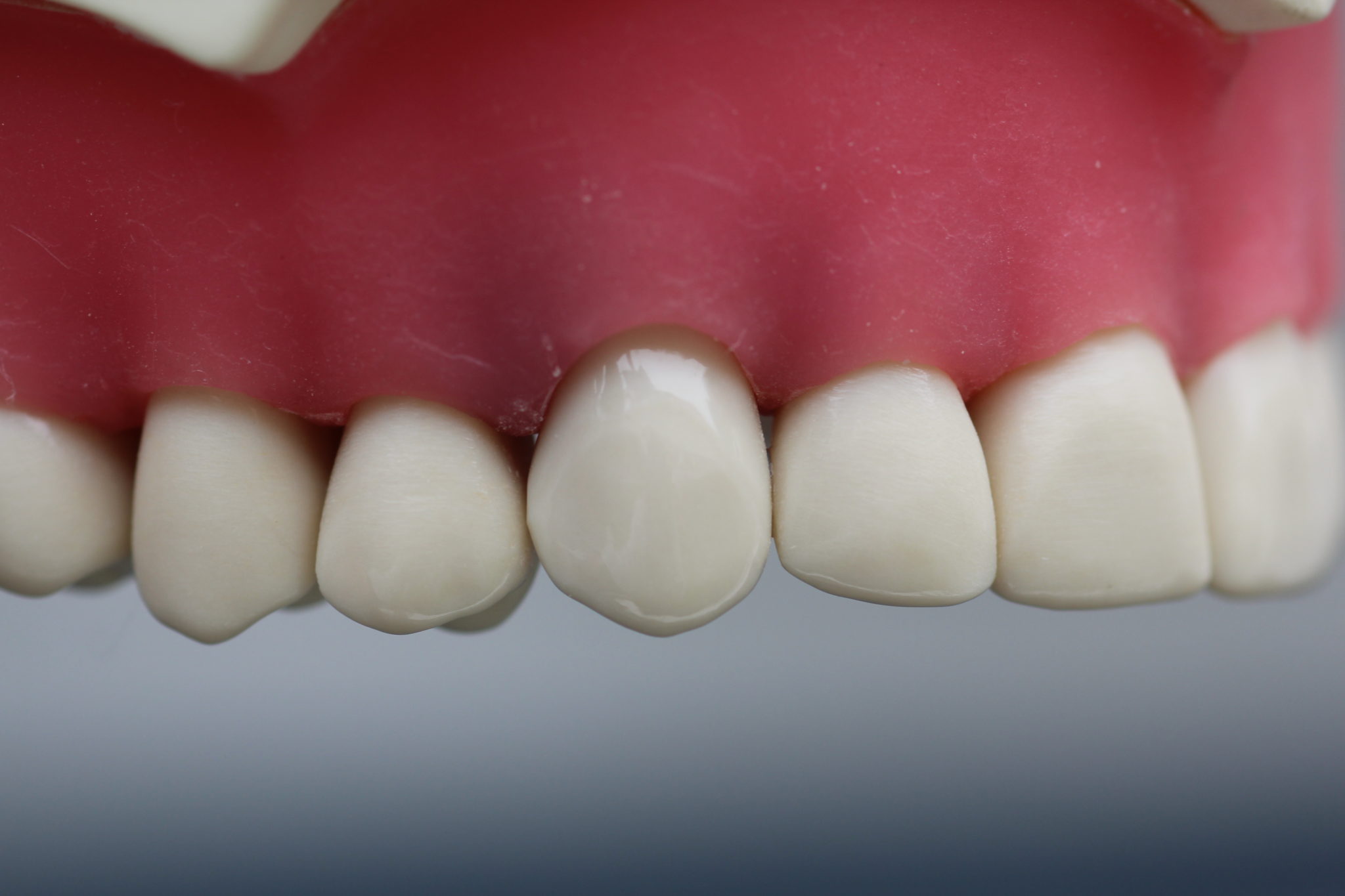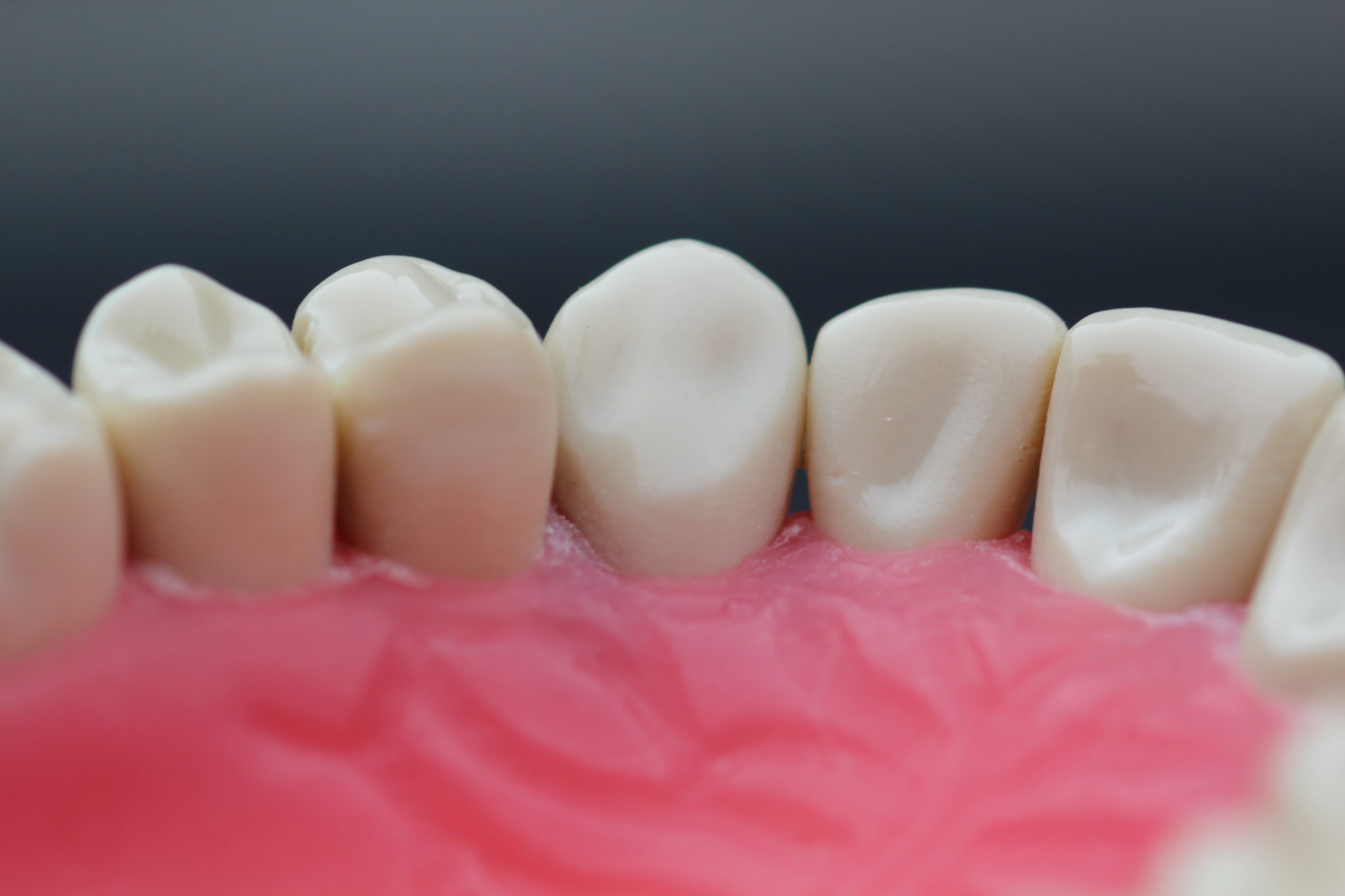The anatomy of the upper canine is unique in a sense that it is placed at the cornerstone of each arch, so the prep seems to be like a fusion between a central incisor and a posterior tooth. It is very wide in almost all aspects, labiolingually and mesiodistally, so there will be too much reduction that may put off some people taking it the first time, but it is normal on this tooth.
The incisal edge has a mesial and distal slope on it, so the reduction is like as if reducing a cusp on a posterior tooth.
Pre-operative View
Before starting the prep, always give it a habit to appreciate the anatomy first and how it relates to the adjacent and the opposing teeth. The dimensions of an upper canine is wide in all aspects, so you are expected to reduce so much tooth structure on this tooth.




Incisal View
Since there is a labial ridge, the labial surface requires a rather huge amount of reduction but there should be a 1.2 mm width of a shoulder margin here, and the reduction is uniform all throughout the crown. The outline form when seen incisally must conform to the actual shape that it was unprepared. Also, there will be a 0.7mm lingual chamfer margin.
Labial View
The most important part in this aspect is that you have to maintain the cusp tip and both of the mesial and distal slopes. Same as doing on a cusp of a molar, you will give depth grooves on each of these areas. When placing depth grooves on either of the mesial and distal slopes, you must be aiming the bur 90 degrees from the surface that your are reducing to.
Lingual View
The lingual aspect of the canine is more complex than the central incisor because of the presence of a lingual ridge in between, and two separate lingual fossae. So while reducing, all of these anatomies must be preserved.
Mesial View
A lot of the same principles apply here as with the upper central incisors. On the labial surface, there should be a two-plane reduction. The lingual should keep the cingulum evident. The only difference is that every aspect in here is more pronounced than that of the upper central incisor.
The incisal reduction still follows the general occlusal plane and will have 2mm reduction.
